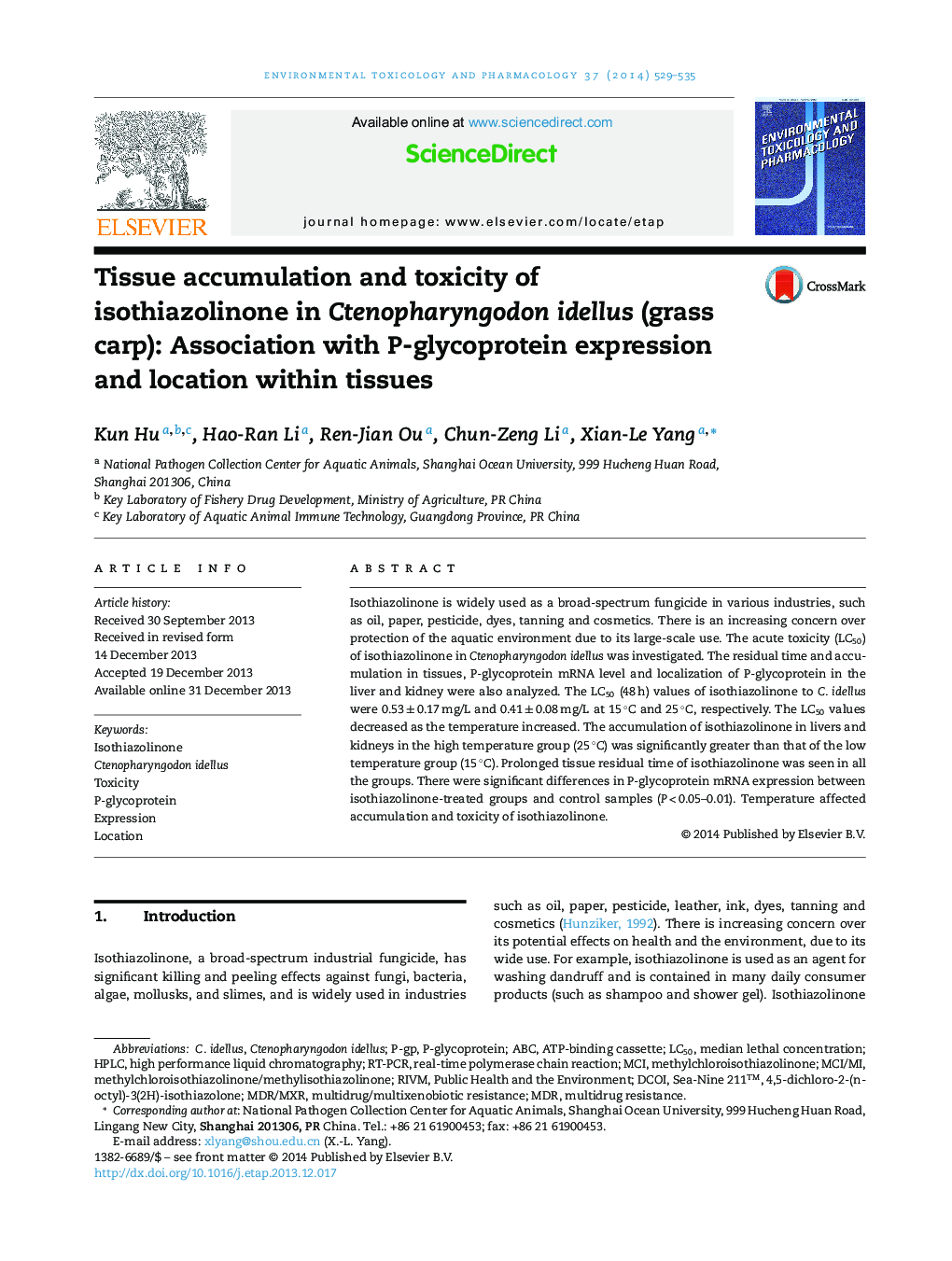| Article ID | Journal | Published Year | Pages | File Type |
|---|---|---|---|---|
| 2582992 | Environmental Toxicology and Pharmacology | 2014 | 7 Pages |
•The LC50 values of isothiazolinone decreased as the temperature increased.•P-gp mRNA expression in isothiazolinone-treated groups was significantly more.•Temperature affected accumulation and toxicity of isothiazolinone.
Isothiazolinone is widely used as a broad-spectrum fungicide in various industries, such as oil, paper, pesticide, dyes, tanning and cosmetics. There is an increasing concern over protection of the aquatic environment due to its large-scale use. The acute toxicity (LC50) of isothiazolinone in Ctenopharyngodon idellus was investigated. The residual time and accumulation in tissues, P-glycoprotein mRNA level and localization of P-glycoprotein in the liver and kidney were also analyzed. The LC50 (48 h) values of isothiazolinone to C. idellus were 0.53 ± 0.17 mg/L and 0.41 ± 0.08 mg/L at 15 °C and 25 °C, respectively. The LC50 values decreased as the temperature increased. The accumulation of isothiazolinone in livers and kidneys in the high temperature group (25 °C) was significantly greater than that of the low temperature group (15 °C). Prolonged tissue residual time of isothiazolinone was seen in all the groups. There were significant differences in P-glycoprotein mRNA expression between isothiazolinone-treated groups and control samples (P < 0.05–0.01). Temperature affected accumulation and toxicity of isothiazolinone.
